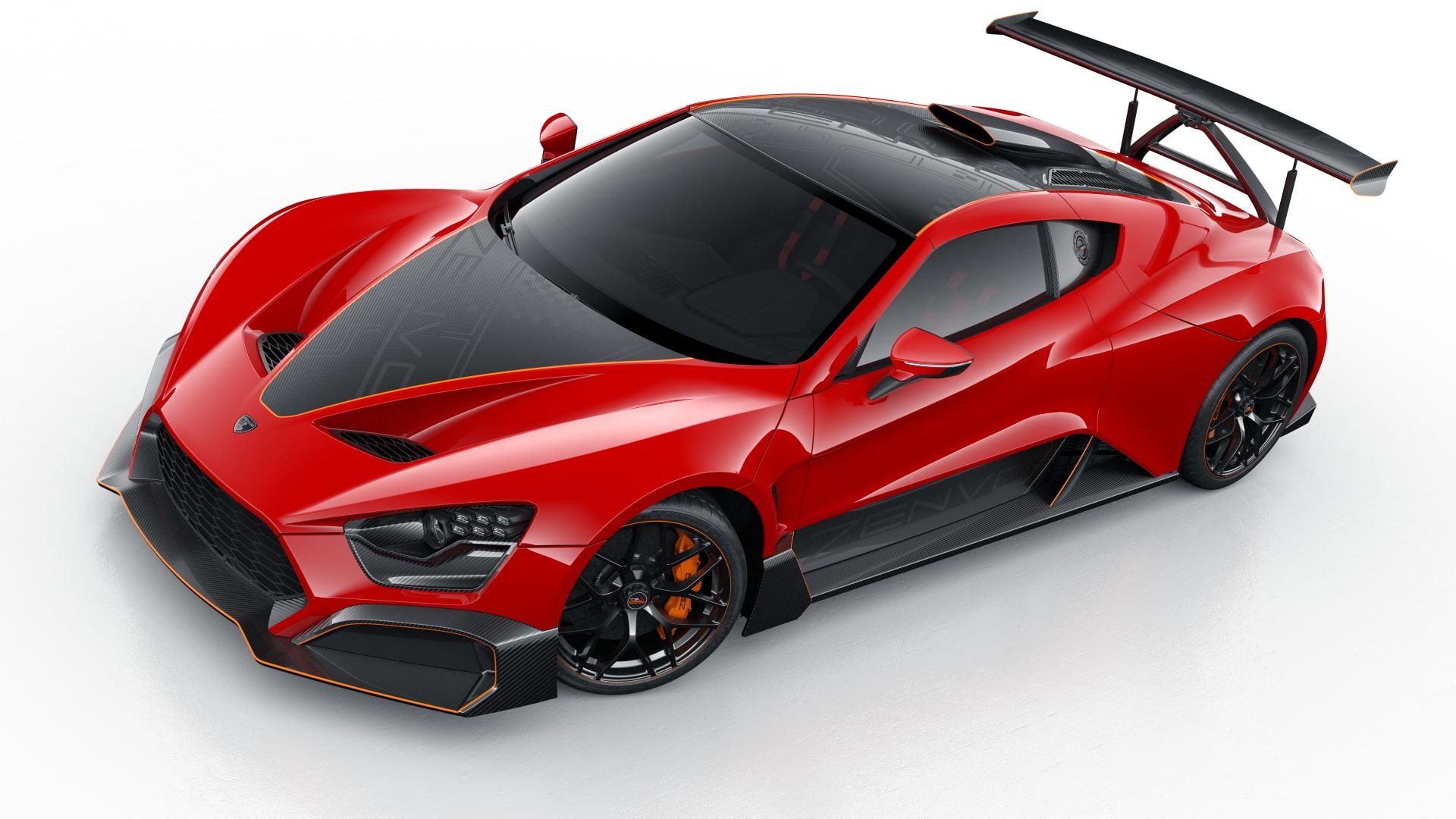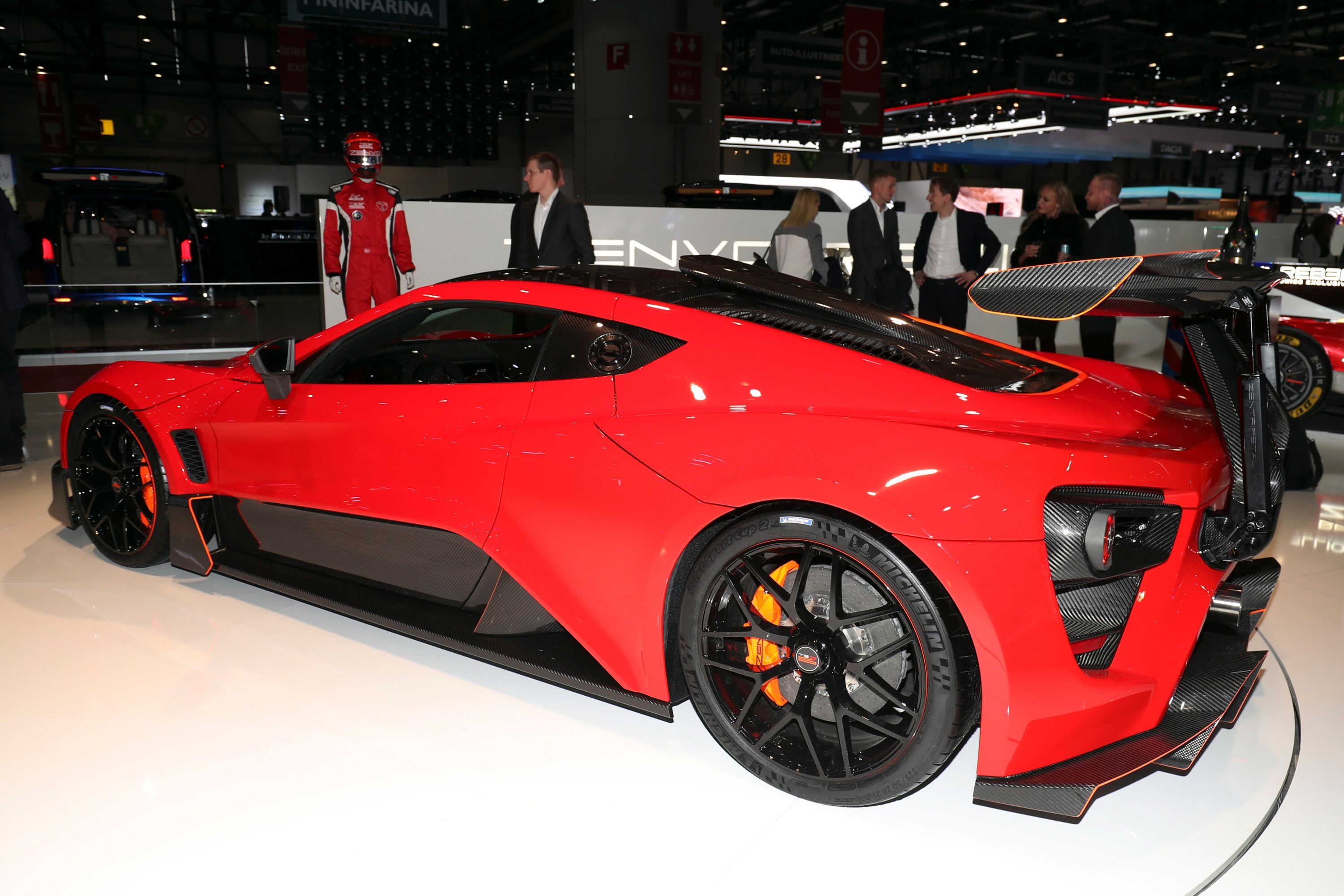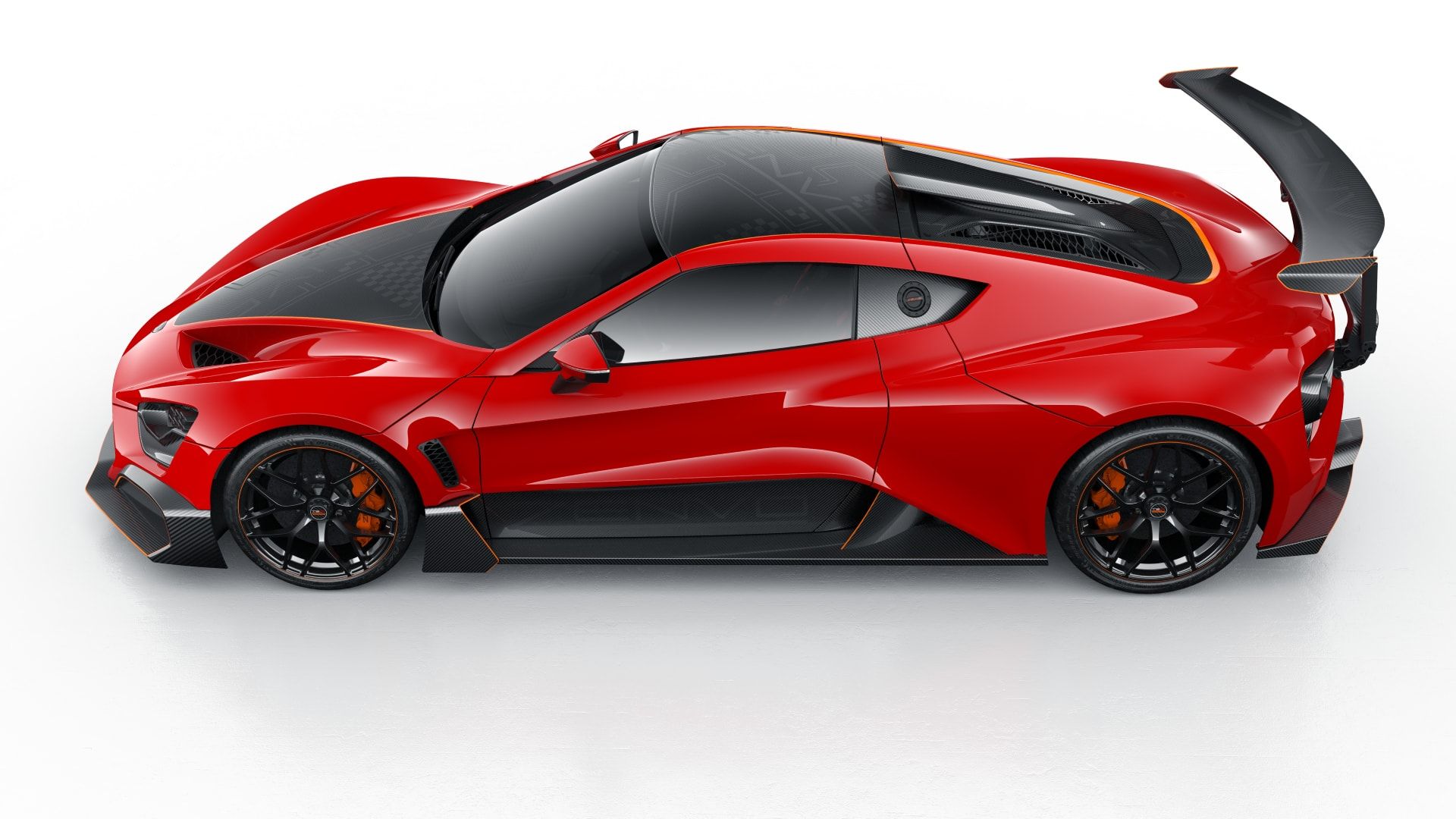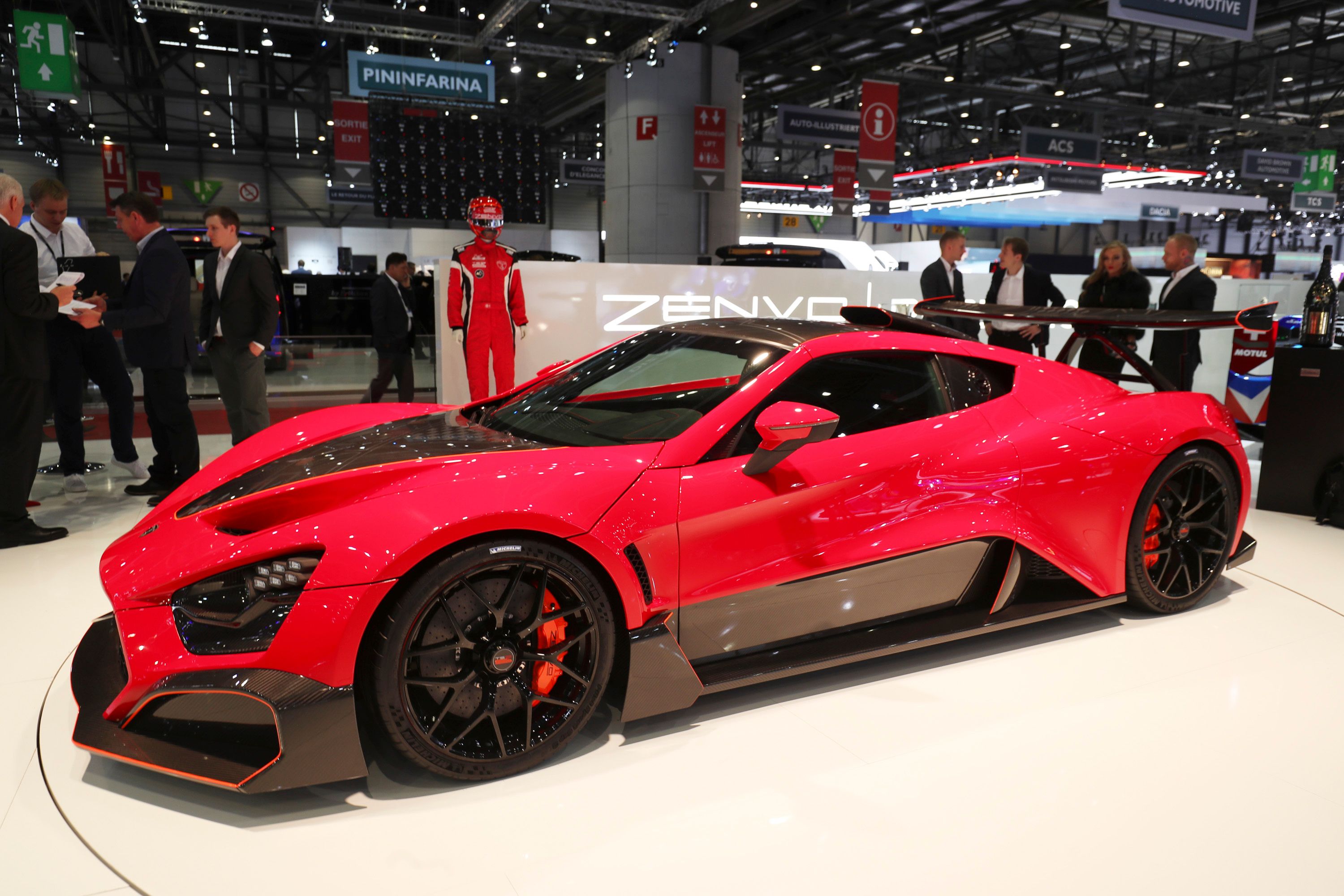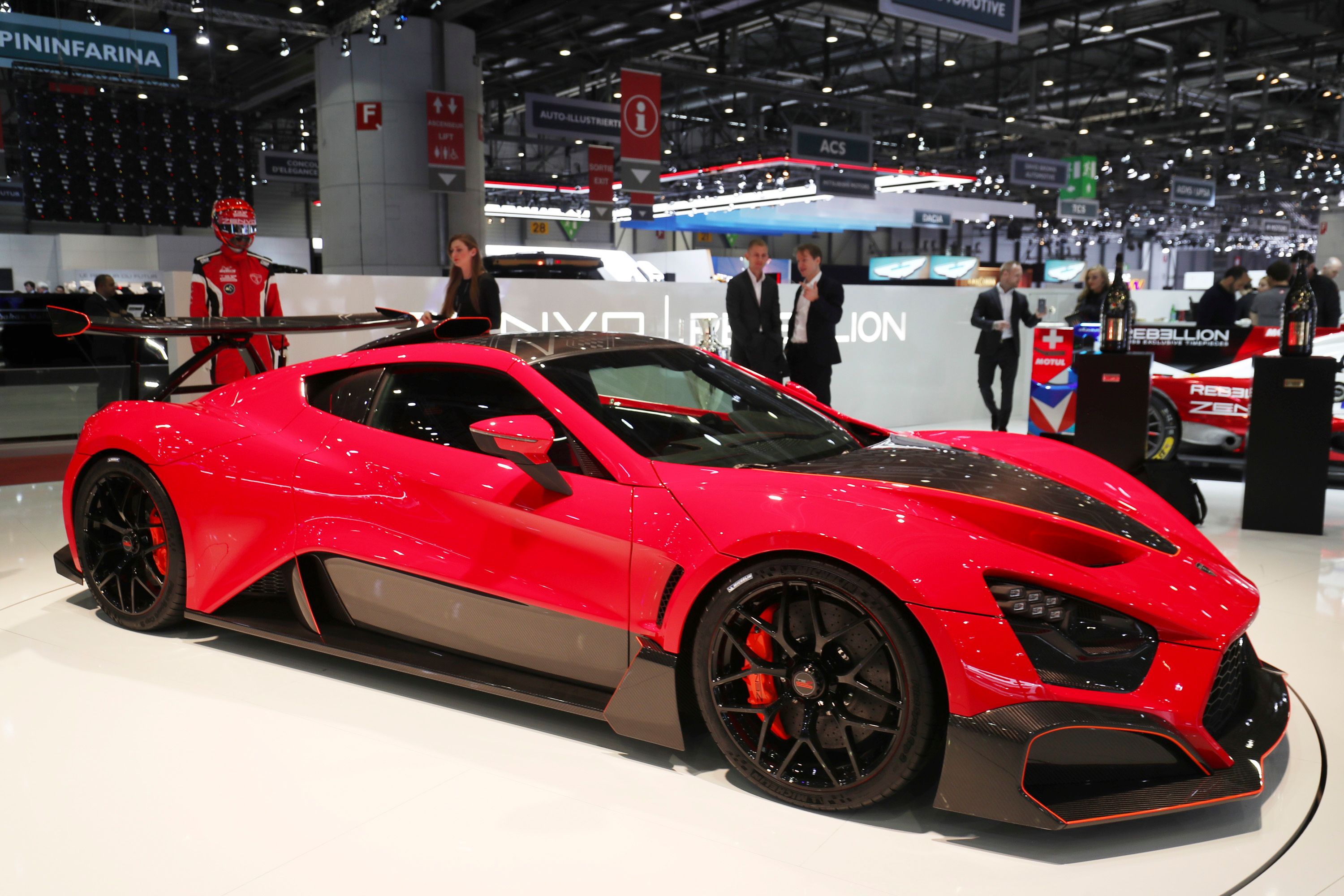It ain’t easy to stand out in the world of hypercars these days, what with all the crazy four-figure carbon-fiber everything spaceships flooding the segment. That’s doubly so at the Geneva International Motor Show, an event where superlative speed is pretty much the norm. However, the TSR-S, the latest barely street-legal monster machine from the folks at Zenvo, accomplishes both these feats, thanks in no small part to its wild new aero set-up.
Continue reading for the full story.
The Full Story
Although the TSR-S is considered a more street-worthy example of the hardcore TSR race car, it’s still got all kinds of cool performance tricks up its sleeves. One of the most interesting is the aero set-up.
“The TSR-S has been completely redesigned and re-engineered for optimum aerodynamic performance,” Zenvo says. Zenvo’s Chief Technical Officer and Founder, Troels Vollertsen, reiterates that statement, saying, “In developing the TSR-S, the utmost dedication and ambition of our team has driven us to achieve unprecedented levels of aerodynamic engineering capability for a road-going car.”
We’re used to reading big boasts like that, but the Zenvo TSR-S can back the claim, making upwards of three times the downforce as its lesser road-going cousin, the TS1 GT. But it’s not just the numbers that make this machine worthy of your attention. It’s the way in which it makes the downforce that really matters.
The most important bit to know about is the active multi-axis Centripetal Wing you see perched on the rear of the machine. This device uses two rotational axes to turn and twist as needed, manipulating the air to create additional stability.
Zenvo says it’s used as both an air brake and a downforce generator - dive hot into a corner and jump on the stoppers, and the wing will flip up vertically, catching the wind and helping to slow the vehicle in the process, similar to what we’ve seen from the likes of McLaren and others.
However, the Zenvo wing differs in one very important way - it’ll also tilt to the left and right.
Put the TSR-S into a corner, and the entire wing will automatically dip to either side of the vehicle, lifting the right-most side while turning right, and vice-versa. Angling the wing in this fashion creates an additional “inward” force to complement the regular flat downforce, which increases the load on the inside wheel and ups grip even further.
“Whereas most supercars only achieve optimum downforce in cornering at a certain speed, the multi-rotational function of the wing distributes downforce in an innovative way to deliver the optimum amount of cornering grip at any speed,” says Vollertsen.
The Centripetal name acknowledges the “center seeking” force this set-up is able to generate. “When the centripetal wing tilts away from the absolute horizontal, the downforce stays perpendicular to the plane of the wing thereby generating a centripetal force,” Zenvo explains.
While the wing tilt decreases overall downforce levels slightly (around 3 percent), the inward directed force it generates is equivalent to 30 percent of the overall wing downforce. Presumably, this extra grip doesn’t come at the cost of added drag, either.
In an age of four-figure mid-engine hypercars capable of jumping to light speed at the drop of a hat, increased downforce over the rear axle is always appreciated.
Acting as a complement to the Centripetal wing is a full aero package that includes a front splitter, a flat underbody, an enormous roof scoop (as inspired by the LMP1 endurance racers that compete at Le Mans), and a rear diffuser. The various inlets in the front fascia were designed to keep drag at a minimum, while vents in the rear help to reduce turbulence coming off the wheel wells. Carbon fiber pervades throughout.
Of course, the best aero in the world would matter little without the power to put it to good use. Luckily, the Zenvo TSR-S brings the heat in the engine department to really exercise that active wing. Mounted just behind the cabin is a twin supercharged flat-plane crank 5.8-liter V-8 making upwards of 1,177 horsepower, which is enough to propel the machine to 62 mph in 2.8 seconds and reach an electronically limited top speed of 202 mph.
It’s kind of a crazy set-up for a road car, but that’s where we’re at these days with the segment. Of course, Zenvo wisely included multiple drive settings to keep the TSR-S from getting out of hand while parading through public, tossing in an “IQ” mode that uses advanced traction control to limit the engine output based on available grip levels.
Unsurprisingly though, we’re most excited to see what this thing will do when driven in anger on an honest-to-God racing circuit. Make it happen, Zenvo!
References
Read our full speculative review on the 2019 Zenvo TSR-S.
Read our full review on the 2017 Zenvo TS1 GT.
Read more Zenvo news.
Read more Geneva Motor Show news.

